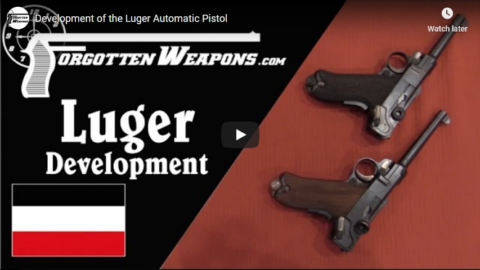Rex Krueger
Published 12 Aug 2020A quick and easy guide to making your own sawhorses!
More video and exclusive content: http://www.patreon.com/rexkrueger
Get the Plans!: https://www.rexkrueger.com/store/2d7p…Tools in this Build (affiliate):
Gyokucho Ryoba Saw: https://amzn.to/33L3HCl
Vaughn Bear Ryoba Saw: https://amzn.to/3ktiOpM (Now costs $35).
Mora Wood Carving Knife: https://amzn.to/3itB40u
Speed Square: https://amzn.to/3gSi6jK
My favorite tape-measure: https://amzn.to/2FeQRSBSign up for Fabrication First, my FREE newsletter: http://eepurl.com/gRhEVT
Wood Work for Humans Tool List (affiliate):
Stanley 12-404 Handplane: https://amzn.to/2TjW5mo
Honing Guide: https://amzn.to/2TaJEZM
Green buffing compound: https://amzn.to/2XuUBE2
Cheap metal/plastic hammer for plane adjusting: https://amzn.to/2XyE7Ln
Spade Bits: https://amzn.to/2U5kvML
Metal File: https://amzn.to/2CM985y (I don’t own this one, but it looks good and gets good reviews. DOESN’T NEED A HANDLE)
My favorite file handles: https://amzn.to/2TPNPpr
Block Plane Iron (if you can’t find a used one): https://amzn.to/2I6V1vh
Stanley Marking Knife: https://amzn.to/2Ewrxo3
Mini-Hacksaw: https://amzn.to/2QlJR85
Blue Kreg measuring jig: https://amzn.to/2QTnKYd
Blue Handled Marples Chisels: https://amzn.to/2tVJARY
Suizan Dozuki Handsaw: https://amzn.to/3abRyXB
Vaughan Ryoba Handsaw: https://amzn.to/2GS96M0
Glue Dispenser Bottle: https://amzn.to/30ltwoB
Orange F Clamps: https://amzn.to/2u3tp4X
Blue Painters Tape: https://amzn.to/35V1Bgo
Round-head Protractor: https://amzn.to/37fJ6oz
5 Minute Epoxy: https://amzn.to/37lTfjK
Dewalt Panel Saw: https://amzn.to/2HJqGmOPlans, t-shirts, and hoodies: http://www.rexkrueger.com/store
Get my woodturning book: http://www.rexkrueger.com/book
Follow me on Instagram: @rexkrueger
August 13, 2020
Make your own Japanese Saw Horses!
Hitler’s screen idol – Leni Riefenstahl – WW2 Biography Special
World War Two
Published 12 Aug 2020Leni Riefenstal’s film techniques were groundbreaking and are still influential today. She did, though, create her most famous works in the service of Adolf Hitler.
Join us on Patreon: https://www.patreon.com/TimeGhostHistory
Or join The TimeGhost Army directly at: https://timeghost.tvFollow WW2 day by day on Instagram @World_war_two_realtime https://www.instagram.com/world_war_two_realtime
Between 2 Wars: https://www.youtube.com/playlist?list…
Source list: http://bit.ly/WW2sourcesWritten and Hosted by: Indy Neidell
Director: Astrid Deinhard
Producers: Astrid Deinhard and Spartacus Olsson
Executive Producers: Astrid Deinhard, Indy Neidell, Spartacus Olsson, Bodo Rittenauer
Creative Producer: Joram Appel
Post-Production Director: Wieke Kapteijns
Research by: Madeline Johnson
Edited by: Monika Worona
Sound design: Marek Kamiński
Map animations: Eastory (https://www.youtube.com/c/eastory)Colorizations by:
– Norman Stewart – https://oldtimesincolor.blogspot.com/
– Olga Shirnina, a.k.a. Klimbim – https://klimbim2014.wordpress.com/Sources:
– BundesarchivArchive by Screenocean/Reuters https://www.screenocean.com.
A TimeGhost chronological documentary produced by OnLion Entertainment GmbH.
From the comments:
World War Two
4 hours ago
Thanks to Madeline Johnson for the research for this episode. In many ways it’s our community who keep TimeGhost going. If you want to be part of this then join the TimeGhost Army on www.patreon.com/timeghosthistory or https://timeghost.tv.Please let us know what other Bios you’d like to see. And if you have a question about the war you’re dying to have answered, submit it for our Q&A series, Out of the Foxholes at: https://community.timeghost.tv/c/Out-of-the-Foxholes-Qs.
Warsaw, August 1920
Lawrence W. Reed discusses one of the most historically significant battles of the 20th century:

Initial Soviet advances during the Battle of Warsaw, 12 August, 1920.
Map by Halibutt via Wikimedia Commons.
This month marks the 100th anniversary of one of the most important military engagements of the 20th Century. It will be celebrated in Poland, the country which won it decisively. The country which lost it, Vladimir Lenin’s nightmarish gulag known as the Soviet Union, is thankfully extinct. Free people everywhere should be grateful to the Poles for the victory.
From 1795 until 1918, Poland disappeared as Austria, Prussia, and Russia partitioned it into pieces for themselves. Upon its re-emergence as an independent nation (an outcome of World War I), a reconstituted Poland immediately faced an existential challenge from Moscow. Lenin’s Bolsheviks were still consolidating power at home but their territorial appetites were well known to Poles and their new Chief of State, Józef Piłsudski. The fateful Polish-Soviet War broke out in February 1919.
Making war on Poland was more than a local affair to the Soviets. They made it plain that the Poles were simply in the way of their larger goal: exporting communism to the rest of Western Europe. Germany, gripped by post-war economic and political chaos, seemed ripe for a Marxist revolution if only Soviet troops could move in and assist, but Poland would have to be disposed of first.
Nicknamed “the Red Napoleon,” Soviet commander Mikhail Tukhachevsky ordered, “To the West! Over the corpse of Poland lies the road to worldwide conflagration. March upon Vilnius, Minsk, Warsaw and onward to Berlin over the corpse of Poland!” Bolshevik theoretician and Lenin confidant Nikolai Bukharin publicly declared that the campaign would take communist forces “straight to London and Paris.” In a letter to Joseph Stalin, Lenin himself suggested the Red Army should attack Romania, Czechoslovakia, and Hungary for the purpose of provoking a communist revolution in Italy, to which Stalin replied in the affirmative.
Both Tukhachevsky and Bukharin, by the way, were executed during Stalin’s purges in 1938 but they were at Lenin’s side and at the pinnacle of Soviet power in 1920. Lenin died in 1924 and was eventually succeeded by Stalin.
Soviet victories in the summer of 1920 looked unstoppable, as Moscow’s Red Army pushed to within striking distance of the Polish capital. From August 12-25, the Battle of Warsaw raged. Foreign observers expected the imminent collapse of Poland. Then, the tactical brilliance of Pilsudski and his chief of staff Tadeusz Jordan-Rozwadowski plus the legendary courage of Polish fighters combined to produce what Poles call “the Miracle on the Vistula.” Author Michael Peck writes in The National Interest:
Just as all seemed lost, Marshal Pilsudski unleashed his masterstroke, a move worthy of Robert E. Lee or Rommel. While the central Russian armies were fixated on Warsaw, a Polish strike force side-slipped to the south of the city, and then turned north in a left hook into the exposed Russian flank. Surprised, demoralized, and outmaneuvered, the Russian armies disintegrated, with some retreating back to Russia and others fleeing to German territory to be interned. Pilsudski’s counteroffensive was assisted by the breaking of Russian codes, a Polish specialty that they later used to crack the Nazi Enigma machine.
Development of the Luger Automatic Pistol
Forgotten Weapons
Published 31 Oct 2016http://www.patreon.com/ForgottenWeapons
Cool Forgotten Weapons Merch! http://shop.bbtv.com/collections/forg…
Lugers! there are approximately a gazillion different recognized varieties, because the pistol became so popular and iconic. And yet … they all kinda look the same, don’t they? (If you are a Luger collector, don’t answer that!) A great many (I daresay the significant majority) of the Luger variations are minor changes in production details. So, what was involved in the mechanical evolution of the Luger?
Not much, really — which is a testament to the talents of Georg Luger. He got the gun almost totally right on his first try. There are, however, two major variants of the Luger mechanically — the 1900 model and the 1906 model. In this video I will walk through the differences between these two, as well as the initial Borchardt pistol that Luger used as his starting point and a couple other relevant milestones (a Swiss trials gun and a transitional French trials gun). And since they are the most common of the military models, we will also take a quick look at the German Army, Navy, and Artillery models.
QotD: The discovery of anaesthesia and antisepsis
The first demonstration of the ether gas was performed at Massachusetts General Hospital in October, 1846, by a Boston dentist, William T. G. Morton. For the first time, surgical operations could be performed painlessly. Within two months, the invention was known and being applied in every capital of Europe, and in little more time it became commonplace internationally. The number of surgical operations vastly increased, as it was no longer necessary to hold patients down, and act very quickly.
Joseph Lister first used carbolic acid (phenol) to perform sterile surgery at the Glasgow Royal Infirmary, in August, 1865. This would have the effect of vastly increasing the survival rate from these now commonplace surgical operations. But the news took years to circulate, and by the twentieth century surgeons were still working with infected equipment in filthy environments. Indeed, I have read accounts of the horrors of battlefield medicine in the First World War: men with survivable injuries, lost by the hundred thousands from ignorant, unnecessarily unhygienic medical procedures.
As Dr Gawande points out — in passing — both advances made life easier on patients. But the second saved lives on a — vastly — greater scale. The first was unique, in making life easier for doctors, who no longer had to operate on screaming, writhing customers. This also, incidentally, hugely increased their trade, and thus their income. Washing up, effectively, only added nuisance.
I already knew this history — my mommy was a ward matron, after all — but until the comparison was spelt out, the full significance was lost on me. I had read the “official” versions in several standard medical histories. They assume the slow spread of antisepsis was a problem of communications. Gentle reader will note that this is a lie. Methods of communication did not slow in the generation between the two inventions.
David Warren, “Heaven, Hell, & Alder Hey”, Essays in idleness, 2018-05-09.







